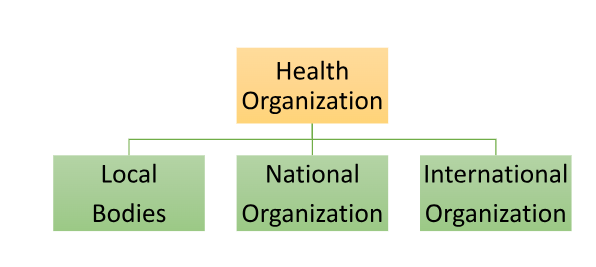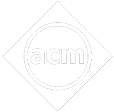- Written By
Shilpi Shikha
- Last Modified 29-03-2025
Health Organisations: Local, National and International Agencies like WHO
Health Organisations: Did you know that ischemic heart disease is the leading cause of disease worldwide? Last year heart disease killed million people in India alone. The number is much higher than death due to COVID. Where did I get all this data from? The answer is the World health organisation. The world relies on health organisations for such authentic information, but that is not all. Health organisations perform various functions from health check-ups to providing information, making and enforcing the right health policies. During the ongoing pandemic, the World health organisation (WHO) played a significant role in providing the correct information, creating awareness and guiding people. Read further to learn about health organisations, their role and functions.
Health Organisation
National and international agencies have paid due attention to healthcare needs and established several agencies, centres, and sub-centres to cater to the ever-increasing demands for healthcare facilities. Because of the scope and severity of global health challenges, no single country or institution can deal with them independently. Hence, several international agencies and institutions assist in developing global health policies as well as the funding, implementation, and evaluation of initiatives.
International and multinational organisations and their regional offices, government agencies, private foundations, universities, and other global health organisations collaborate to improve public health outcomes, provide technical expertise, and implement new strategies in the ever-changing field of public health, control of diseases, developing diagnostic methods and Vaccines. A flow diagram is included below to reveal the expansion of the gigantic healthcare tree with its branches.
Fig: Types of Health Organisations
Local Healthcare Bodies
Keeping the population norms in mind, the rural healthcare infrastructure in the country has been developed in a three-tier system.
Rural Healthcare System in India
The rural healthcare system runs at different levels:
- Sub-centres (SCs)
- Primary Health Centres (PHCs)
- Community Health Centres (CHCs)
- First Referral Units (FRUs)
National Urban Health Mission (NUHM)
The government of India approved NUHM, and it was launched on 06 April 2015. The following provisions were made for this grand scheme.
- One urban primary health centre (U-PHC) per to thousand people.
- One urban community health centre (U-CHC) per to U-PHCs in big cities.
- One auxiliary nursing midwife (ANM) per population.
- One Accredited Social Health Activist (ASHA) or community link worker per to households.
Purpose of Establishing NUHM
The NUHM is a dream project of the government of India. It aims to improve the health of the urban population in general, especially the poor and other disadvantaged groups, by allowing equitable access to quality healthcare through a reformed primary public healthcare system, targeted outreach programmes, and community involvement in urban populations. Good numbers of poor people have benefitted under this scheme, and the mission has been lauded by national and international experts.
a. Reduction in infant mortality rate (IMR)
b. Reduction in maternal mortality rate (MMR)
c. Universal access to reproductive healthcare
d. Convergence of all health-related inventions
The NUHM works in consonance with the National Rural Health Mission (NRHM). More and more facilities are being gradually added under this mission, and it is bound to prove an all-pervading, omnipresent mission catering to the needs of millions.
Sub-centres (SCs): These are joint projects of the central and state governments. There are established sub-health centres in the plain area, with a population ratio of one for every people. The population norm in the hilly/tribal area is instead of .
At present, there are over SCs in the country, some of which are now upgraded as Health Wellness Centre-Sub Centre (HWC-SCs). These are the most peripheral contact points between the Primary Healthcare System and the Community.
These SCs are manned with one Female Health Worker (HW(F)) or an Auxiliary Nurse Midwife (ANM) & one HW(F), and a male health worker (MHW). Under the National Rural Health Mission (NRHM), there is a provision for the establishment of an additional ANM. One Lady Health Visitor (LHV) is assigned the task of regulating six SCs. At present, there are over SCs and HWC-SCs in the country.
These are assigned the tasks relating to interpersonal communication to bring about behavioural change and provide services in relation to maternal and child health, family welfare, nutrition, immunisation, diarrhoea control, and control of infectious diseases.
Primary Health Centres (PHCs)
The PHCs are established and maintained by the respective State Governments under the Minimum Needs Programme (MNP) and Basic Minimum Services (BMS) program. They are the point of contact between the rural public and the government.
The population norms for PHCs are in the plain area and for hilly/tribal areas. These are referral units for six sub-centres, consisting of a bedded small hospital, manned with a medical officer-in-charge (MO I/C) and subordinate paramedical staff. Under NRHM, there is a provision for two further staff nurses at PHCs. There are PHCs in India, and the activities of these PHCs involve curative, preventive, promotional, and family welfare services.
CHCs are established and maintained by the concerned State Governments. At present, there are over 6000 CHCs in rural areas.
The population norms are 120000 and 80000 per centre, respectively, for the plain and hilly/tribal areas. These comprise a 30 bedded -hospital/ referral unit for 4 PHCs with specialised services, that is, four specialist doctors comprising physician, surgeon, gynaecologist, and Paediatrician, and paramedics, Operation Theatre (OT), X-ray unit, labour room, and laboratory facilities.
These centres serve the larger interests of the rural population. Some of these centres have reached medical facilities to those areas which are remotely located. Thanks to the five-year plans through which developments have been streamlined.
First Referral Units (FRUs)
These provide comprehensive obstetric care services, including caesarean section, new-born care, emergency care of sick children, full range of family planning services, safe abortion services, treatment of Sexually Transmitted Infections and Reproductive Tract Infections (STI/RTI), availability of blood storage unit, and referral transport services, etc. There are FRUs in India as of today.
International Health Organisations: WHO
World Health Organisation (WHO)
WHO is a specialised agency of the United Nations Organisation (UNO). It was established in 1948, headquartered in Geneva, Switzerland. Its constitution states its primary objective:
“The attainment by all peoples of the highest possible level of health.”
In practice, WHO stands for Working together for the good of all people, everywhere.
The WHO Member States spread across six regions and locations on the ground. India is included among the member states. WHO is headed by an elected Director-General, other officials, and subordinate staff. They have a team of medical experts and paramedics, epidemiologists, scientists, researchers, and regional heads. Its primary role is to direct international health within the UNs’ system and lead global health response partners.
WHO is dedicated to the health of all people, and its working ethics are guided by science. WHO leads and champions global efforts to give everyone, everywhere, an equal chance to live a healthy life?
It connects nations, partners, and people to promote health, keep the world safe and serve the vulnerable – so everyone, everywhere, can attain the highest level of health. WHO pays special attention to pregnancy care, child health, and the health of older people?
The Six Regions of WHO:
These are Africa, the Americas, Eastern Mediterranean, Europe, South-East Asia, and Western Pacific.
Policies of WHO
WHO policy is a set of principles created with the intent of guiding actions and achieving sensible outcomes.
- Disability cure: HO aspires to be an “all-inclusive organisation,” with individuals with disabilities represented at all levels of the agency’s workforce.
- Ethics: All WHO workers and associated people are encouraged to follow the ethical principles drawn from the international civil service standards of conduct.
- Multilingualism: This improves both the equity and effectiveness of access to health information.
- Privacy: Maintaining privacy is their utmost priority, and the date is not shared.
- Publishing: Material on the policies put in place by WHO to guarantee that it is published information is accessible and usable.
- Sustainability: WHO promotes environmental sustainability.
Summary of Health Organisations
In the real world, there are places with rudimentary health services, hospitals and clinics with ignorant and ill-informed staff, patients who sell kidneys for a living, and even worse, patients who sell antibiotics and buy food products out of desperation, and dumb pharmacists who mix up first-line tuberculosis medications with other drugs, and dumb pharmacists who mix up first-line tuberculosis medications with other drugs.
Healthcare professionals must Recognise that it is a life’s work and a never-ending continuous cycle of progress that necessitates frequent improvement in terms of life and health. Health care Organisations can be Categorised into three: Local, National and International. Local healthcare bodies include Sub-centres (SCs), Primary Health Centres (PHCs), Community Health Centres (CHCs), and First Referral Units (FRUs).
NUHM aims to satisfy the health care needs of the urban population, with a particular focus on the urban poor, by making critical primary health care services available to them and lowering their out-of-pocket treatment costs. WHO is a specialised agency of the United Nations Organisation (UNO). WHO is dedicated to the health of all people, and its working ethics are guided by science. World Health Organisation is an agency working in synchronisation with different parts of the world to provide health care, awareness and information worldwide.
Frequently Asked Questions (FAQs) From Health Organisations
Q.1. Who is the father of the surgery? Ans: Sushruta is regarded as the founder of surgery. If the history of science can be traced back to its beginnings, it most likely begins in an unmarked period of ancient history.
Q.2. What is WHO? Where is the headquarters for WHO? Ans: WHO is the World Health Organisation. The headquarters for WHO is in Geneva, Switzerland.
Q.3. What is the national urban health mission (NUHM)? Ans: NUHM aims to satisfy the health care needs of the urban population, with a particular focus on the urban poor, by making critical primary health care services available to them and lowering their out-of-pocket treatment costs
Q.4. Which unit of the national health organisation focus on childbirth and family planning? Ans: First Referral Units (FRUs)
Q.5. What are the policies of WHO? Ans: Disability cure, Ethics, Multilingualism, Privacy, Publishing, and Sustainability.
We hope this article on Health Organisations has helped you. If you have any queries, drop a comment below, and we will get back to you at the earliest.









































